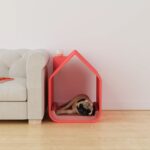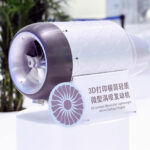There are quite a few fringe forms of additive manufacturing that often take the science world by surprise. Chinese researchers recently found one by making metal-based nano scale structures using plain, old frozen water as a photoresist material. The scientists have shown of a range of shapes they can make with the metals including tiny bridges and pyramids.
While the ice is traditional water, the scientists created it at very low temperatures (minus 130 °C). At temperatures that low, a very thin layer of condensed water vapour turns into thin smoothe solids. Traditionally the electron beam lithography uses a electron-sensitive “resist” material to draw on the surfaces of the resist by immersing it in a developer.
Using an electron beam, scientists can change the solubility of the resist material drawing custom patterns with it. This allows the process to write on structures on a sub-10 nano meter resolution on metals. Here, however, the researchers found a way to replace the resist with ice.
Scientists call that particular state, amorphous ice. “We later discovered that this happens to be the climatic environment of the comet, and the ice on the comet is also in this amorphous state,” Professor Qiu Wei said.
Printing Ice with Electron-beam lithography
The accuracy of an EBL machine can be 60-80 nm, which is equivalent to one thousandth of a human hair. It can also go even lower than that but it’s difficult to maintain accuracy at a scale that tiny. However, it also has certain limitations. For one, the traditional resist is very hard to clean and the regular method also allows for the barest dust particles to tamper with the print. With the ice-based method, the team can mitigate a lot of these issues.
The iEBL process has 5 main steps: cooling, ice deposition, exposure, material evaporation and peeling. The team used a Zeiss Sigma field emission scanning microscope to create a range of nano-3D shapes. The process simplified the traditional workflow a lot by employing the use of a vacuum system that skips the the spin-coating and developing steps commonly present in the old method.
As one might imagine, they didn’t need to sacrifice the accuracy of the process at all. “We also tried to put a nano silver medal on a nano silver wire with a thickness of one thousandth of a human hair,” researcher Hong Yu said.
The researchers believe the method can be useful in the creation of complicated optoelectronic devices, which are based on quantum dots, nanotubes, nanowires, graphene, fiber, etc materials. The process also demonstrates how a simplified process can be derived from unexpected materials like water. While the research is still ongoing, the results already look promising.
Featured images courtesy of the original study.












